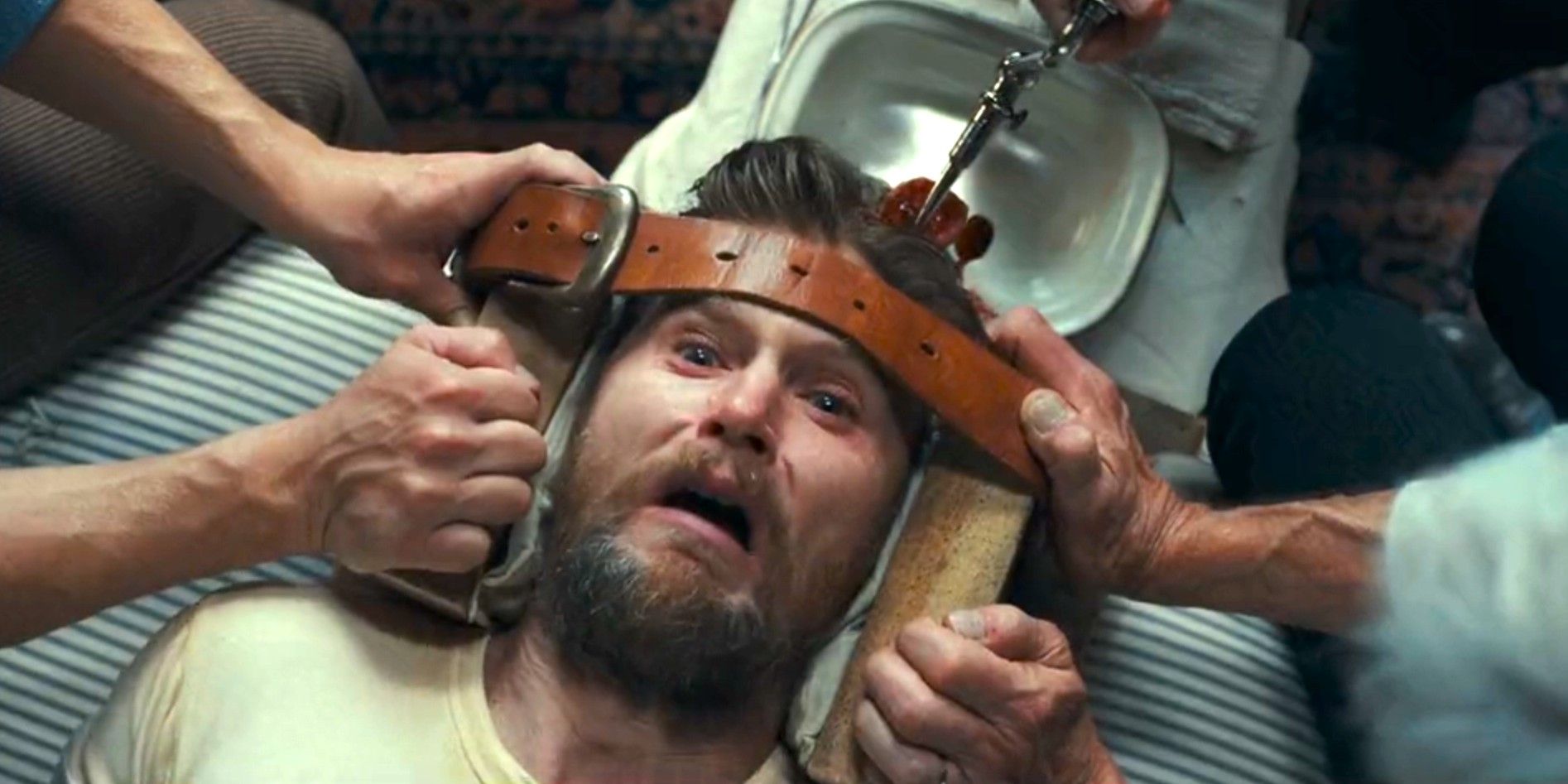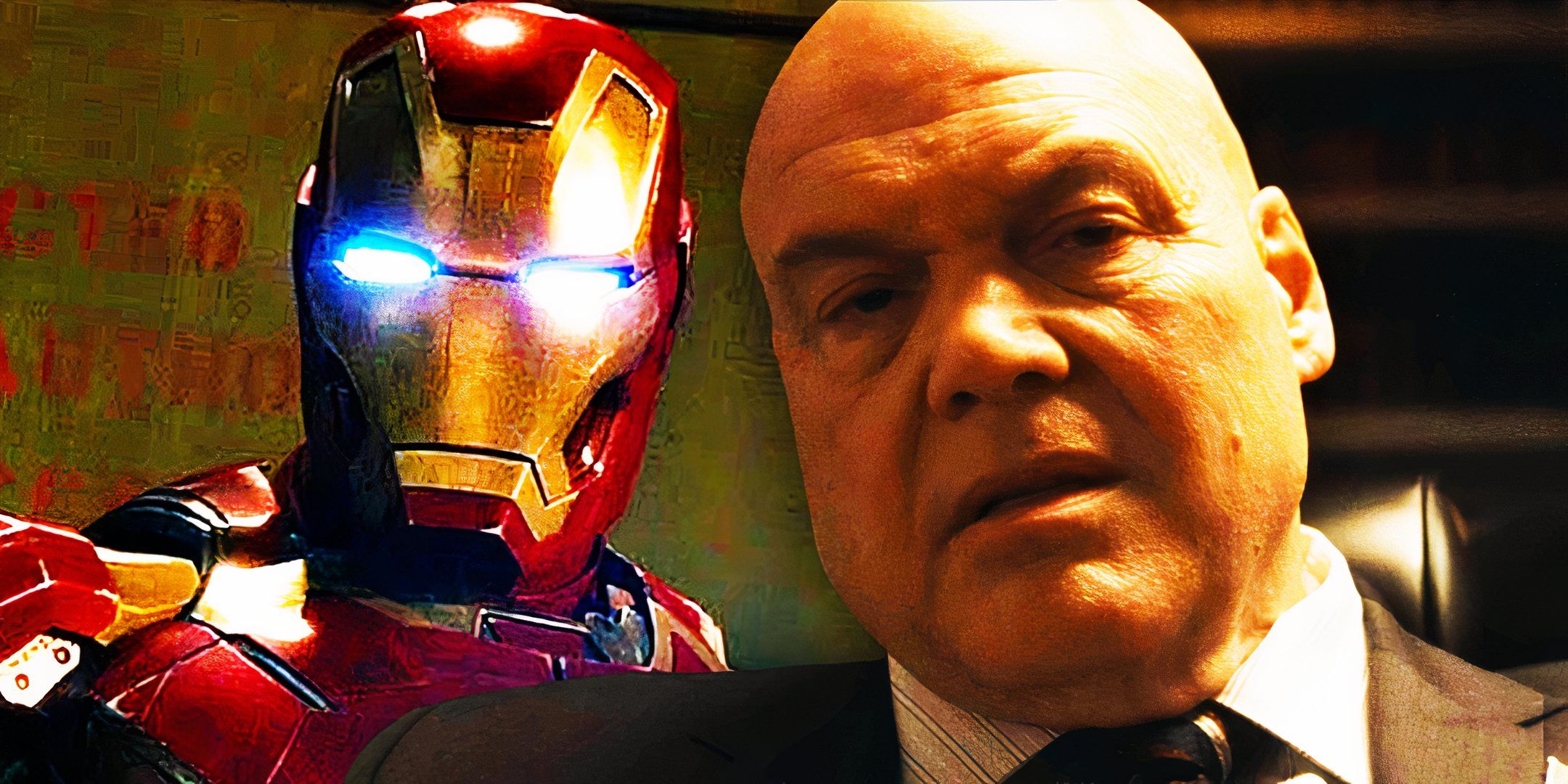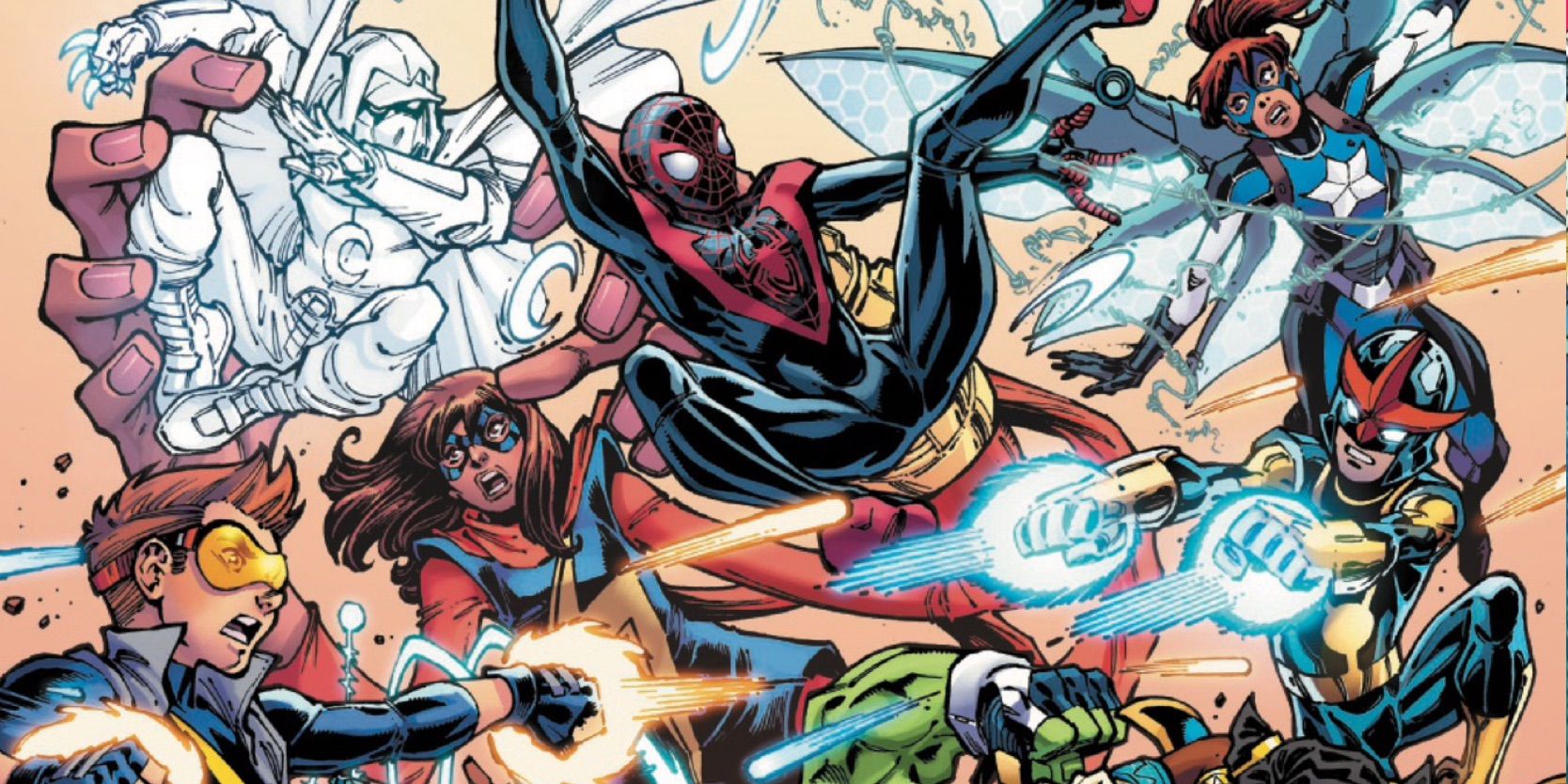13 Hidden Details You Never Noticed In The Green Mile
Summary The Green Mile's use of 15 mice for Mr. Jingles adds to the film's entertainment and supernatural elements.
Setting The Green Mile in Louisiana was a rare non-Maine choice for Stephen King, adding discomfort and racial tension.
Despite historical inaccuracies, The Green Mile's visual choices and costume details enhanced character development and storytelling.
From the reality behind how tall Michael Clarke Duncan really is to the mice who played Mr. Jingles, there are a lot of interesting details about the making of The Green Mile. Years after Frank Darabont made the acclaimed The Shawshank Redemption, he made another Stephen King adaptation set in a prison. However, The Green Mile is a much different movie as it stars Tom Hanks as a prison guard working at a death row facility in the 1930s who encounters an unusual prisoner named John Coffey (Michael Clarke Duncan).
The Green Mile is a movie that has held up well to the test of time, and it's a great film that anyone can watch and enjoy over and over again. However, even those who have seen the movie countless times might not be aware of some of the smaller details that helped bring the larger production together. The key cast for the film, the period setting, and the ambitious genre elements required a lot of interesting approaches to making The Green Mile the beloved movie it is today.
Related Everything The Green Mile Changes From Stephen King's Book The critically acclaimed movie The Green Mile is based on a book by Stephen King. Here are all of the differences between the film and the novel.
13 Several Mice Were Used As Mr. Jingles
The Nice Required To Perform Specific Tricks
Close
Despite all the incredible performances and rich characters among the human cast of the movie, The Green Mile's Mr. Jingles threatens to steal the show each time he appears on-screen. The tiny mouse appears on death row and brings a bit of fun and amusement into the dreary world of the doomed criminals. He also becomes key to the overall story and its supernatural elements.
The movie actually cast 15 mice in total.
The mouse in question is shown to do far more than just scurry around on the floor as he provides a lot of entertainment in the form of some circus tricks, like posing a small wheel. While it is impressive that the production managed to find one mouse that could be trained to do this, according to the making-of documentary, the movie actually cast 15 mice in total to pull off the part with each mouse hired to do the specific tricks required for filming.
12 A Rare Non-Maine Setting For A Stephen King Story
King Chose Louisiana As The Setting
Close
Author Stephen King is undoubtedly best known for his horror work, so it's easy to forget the fact that he actually has a very wide variety of stories that he likes to tell, including the tale of The Green Mile. However, one thing that makes The Green Mile seem even less like a Stephen King tale is that, in a very rare departure from his standard, the story is actually not set in his home state of Maine.
The Shawshank Redemption's setting does stick to the common Maine location for the story, but The Green Mile is a story set in the South during the Great Depression. The film was shot in a dilapidated prison in Tennessee, but the story itself takes place in Louisiana. The humid climate can be felt throughout the movie, adding a sense of discomfort while the racial tensions of the area at the time play into the story as well.
11 The Correctional Officer Uniforms Are Inaccurate
The Choice Was Based On The Visual Authority Given By The Uniforms
Close
It is interesting to see the challenges that come with making a period piece as sometimes the filmmakers are attempting to balance the historical accuracy of the movie with what the audience would expect. Usually, anachronisms in films are just simple mistakes, not choices made by the film production intentionally. However, The Green Mile made an understandable choice when they decided to put all of the prison guards in uniform even though prison guards in that era didn't have official uniforms yet.
They could have made the film more accurate to the time period, but ironically, the viewing audience most likely would have had a hard time buying the characters as guards if they weren't in uniform. It could also be that Darabont and his team chose to stick closer to King's work as inspiration as the source material does specifically mention guard uniforms.
10 Doug Hutchinson Was Much Older Than His Character
Percy Was Written As A Man In His 20s
Close
When a movie studio decides to adapt a novel for the big screen, it's pretty common for the production to make adjustments and allowances to the source material in order to make the adaptation better, or at least easier. However, the character of Percy in the book is 21, whereas actor Doug Hutchison was almost twice that age when he played the role.
Hutchison was 39 at the time of filming, but he lied to Frank Darabont about his age and said he was in his early 30s. Hutchison was about to pull it off by having a younger-looking face than his age suggested. In the end, the small lie and the age gap between the actor and the character didn't matter given how effective Hutchison's performance was. He makes for a slimy, detestable villain whom the audience is actively cheering against.
9 Sam Rockwell Committed To His Character's Appearance
Wild Bill's Grotesque Appearance Was Added To By Rockwell
Close
Sam Rockwell is a talented and versatile actor who seems to be very devoted to playing his roles as convincingly and authentically as he possibly can. In The Green Mile, Rockwell found one of his breakout roles that helped to cement him as a popular character actor before the leading roles started to come his way. Rockwell plays the part of Wild Bill Wharton, and his character appears to be pretty strongly affected by some serious acne.
In his quest to stay as true to the character as possible, when Sam was faced with filming a nude scene in the movie, he actually requested that the film's makeup team apply zits and acne marks all over his body in order to truly sell his appearance. It is not a fun image to look at, but Rockwell's suggestion helped to make Wild Bill another of the movie's memorable and off-putting villains.
8 Michael Clarke Duncan Was Made To Look Even Bigger Than He Actually Is
Duncan Didn't Tower His Costars As It Seemed
Close
Michael Clarke Duncan was an actor seen in smaller supporting roles when he got the role of John Coffey in The Green Mile. The most essential role in the film and the heart of the story, Duncan earned high praise and an Oscar nomination for his powerful performance as the gentle giant. However, despite Duncan's imposing natural size, the movie had to use a lot of creative angles in order to make him look so much bigger than every other actor on screen.
Duncan looked huge next to the more average-sized actors, but with actors like David Morse (who is 6'4") and James Cromwell (who is 6'6", actually one inch taller than Michael), they had to work to make him look so much larger. Some of these techniques included making special smaller props for Coffey, such as having his prison cell bed be smaller than the others.
7 Bruce Willis Was Key In Casting Duncan As John Coffey
Willis And Duncan Had Previously Worked Together
Close
The casting of John Coffey was one of the hardest and most vital aspects of The Green Mile with the character and his imposing size making it difficult to find the right actor. However, it ended up being another superstar actor who was not even involved in the movie that helped Duncan get the role. Actor Bruce Willis had worked with Duncan on Armageddon and The Whole Nine Yards and was familiar with the story of The Green Mile as well as the movie production that was getting underway.
Duncan then auditioned for the role and was cast weeks before filming began.
In the documentary Walking the Mile: The Making of The Green Mile, Duncan recalls how Willis told him about the role and that he was going to call Frank Darabont and tell him "I found John Coffey." Duncan then auditioned for the role and was cast weeks before filming began.
6 The Electric Chair Was Not Used In Real Life At This Time
Hanging Was The Method Of Execution At The Time
Close
The electric chair in The Green Mile is a foreboding presence in the movie despite simply being an object. There is a palpable feeling that all of these men on "the green mile" are heading to that eventual end and the chair is shot as an ominous and even scary inevitability whenever it is seen on screen. The movie shows the process of how the chair works in detail as well as the gruesomeness that can happen when the proper procedures are not followed.
While the electric chair does make for a very cinematic method of execution in the movie, as well as being used in Stephen King's novel, it was not the method that would have been used in Louisiana at this time. It wasn't until 1940 that the state began using the electric chair for death row inmates and hanging was the chosen method of execution up until then.
5 Straightjackets Were Also Not Historically Accurate
The Movie Balanced Accuracy And Cinematic Effect
Close
Sam Rockwell's Wild Bill becomes a force of unpredictability and a deranged threat when he enters the death row prison. He is an out-of-control prisoner who is not shy about acting out simply for his own amusement and even starts his prison time off by attacking all of the guards at once. Not surprisingly, Wild Bill ends up in a straightjacket more than once in the movie.
The straightjacket is a restrictive piece of clothing and makes it so the inmate is unable to use their arms at all. It is another intimidating piece of equipment within the prison, but like the guard uniforms and the electric chair, its use in the movie is not historically accurate. The buckles seen on the straightjacket were not used until the 1980s as they were simply laced up before then. However, the image of the prisoners being tightly buckled into the jacket is a more visually effective method for the movie.
4 A Mistake With Percy's Costume Was Kept
Squeaky Shoes Fit Percy's Character
Close
Along with the costumes being a more effective visual for the characters, despite the historical inaccuracies, they even helped to add new aspects to some of the characters. When Doug Hutchison put on his costume to play Percy, it was discovered that the shoes he wore gave off a noticeable and irritating squeak whenever he walked. Rather than switch them out for a new pair, Frank Darabont found that they were the perfect shoes for the character.
Along with being evil and sadistic in his job as a guard, Percy is also a great annoyance to his colleagues. He is arrogant to the point of acting like he is in charge despite being the most inexperienced guard in the prison. He is also entitled thanks to his family connections, making him someone the others have to put up with. The squeaky shoes simply added to all the unpleasant aspects of the character.
3 Eduard's Execution Was Inaccurate
The Gruesome Scene Exaggerated For Dramatic Effect
Close
One of the most disturbing scenes in the movie is the execution of Eduard Delacroix (Michael Jeter). Jeter's performance makes the character likable despite being a death row inmate and there is a childlike quality that suggests he doesn't quite understand the situation he is in. Sadly, he gets the most brutal death in the movie which shows the extent of Percy's sadistic side.
Percy fails to properly wet the sponge used as a conductor for Eduard's execution, making it a longer and more painful drawn-out process rather than the quick death it is meant to be. However, the scene's depiction of the execution is exaggerated for emotional effect, especially in Eduard's screams of pain during the ordeal. The muscles in the body contract and people can't even open their mouths when being executed by electricity.
2 Guards Did Not Carry Guns
Will Bill's Death Shouldn't Have Been Possible
Close
The Green Mile has two clear villains in its story, Percy and Wild Bill. Both characters initially just seem unlikable but the true extent of their evil is revealed later. Percy brutally executes Eduard while it is revealed that Wild Bill is the one responsible for the murder of the two young girls for which John Coffey is being sentenced to death. However, one satisfying moment brings down both of the characters.
Following Eduard's execution, John grabs hold of Percy, using his abilities to put a trance on him. This leads to Percy walking over to Wild Bill's cell, pulling his gun, and killing the prisoner. With Bill dead and Percy sent off to a mental health facility, it makes for a satisfying moment. However, it would also have been impossible as prison guards are not permitted to carry firearms in the prison.
1 Prisons Were Segregated At The Time
John Coffey Would Not Have Been Kept At The Same Prison
Close
Though not the main focus of the story, racism plays a role in The Green Mile in some subtle ways as Wild Bill spews racial slurs at John Coffey at various points. There is also the unavoidable story detail that people are readily willing to prosecute and execute a Black man for a crime that was actually committed by a white man. However, the movie does gloss over some of the racial aspects in order to make the story work.
In reality, Louisiana in the 1930s would not have had racially integrated prisons like the one seen in this movie. Even on death row with all of the prisoners going to meet their end, there would not have been a Black prisoner housed with the white prisoner. The same goes for the Native American character of Arlen Bitterbuck, played by Graham Greene.











COMMENTS